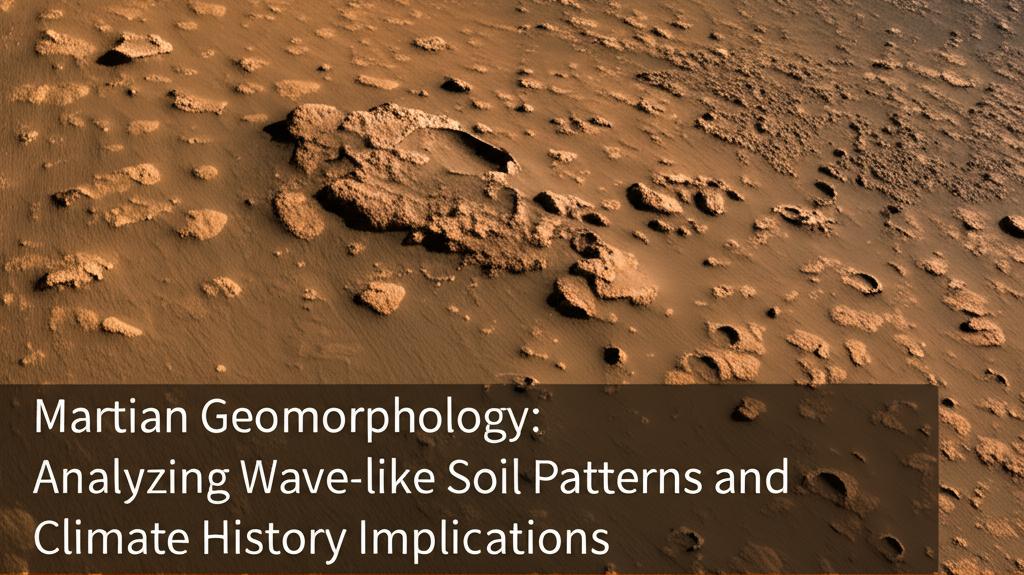Recent research using high-resolution satellite imagery, particularly from the HiRISE camera on NASA's Mars Reconnaissance Orbiter (MRO), has revealed striking similarities between wave-like soil patterns on Mars and those found in Earth's cold, mountainous regions. These findings offer valuable new insights into Mars' climate history, particularly concerning past freezing and thawing cycles, and its potential to have once harbored life.
These Martian landforms, often described as looking like "paint dripping down a wall," closely resemble "solifluction lobes" on Earth. Solifluction lobes are formed by the slow, downhill creep of soil that has been loosened by seasonal freezing and thawing in icy landscapes, such as the Arctic and the Rocky Mountains. The identification of similar patterns on Mars suggests that the Red Planet may have experienced comparable geological processes shaped by ice.
One notable difference is that the Martian lobes are, on average, about 2.6 times taller than their terrestrial counterparts. Scientists attribute this to Mars' weaker gravity (approximately 38% of Earth's), which would allow these sediment waves to grow taller before collapsing.
While the presence of these features strongly indicates past freeze-thaw cycles on Mars, it doesn't definitively confirm the involvement of liquid water in their formation. Due to Mars' thin atmosphere, these cycles were more likely driven by sublimation, where ice transitions directly into vapor, rather than melting into liquid water. However, the patterns are consistent with what would be expected from fluid-like instabilities, suggesting ground ice was, or is, involved. Further laboratory experiments are needed to determine if both ice and liquid water are necessary to create these specific wave-like patterns.
The age of these Martian features—whether they formed recently or long ago—is still under investigation. Regardless of their age, their existence provides crucial information about the evolution of the Martian climate. If Mars once had icy, wet conditions similar to those that form solifluction lobes on Earth, these areas could be prime locations to explore the role of water in shaping the planet and to search for signs of past or even present life.
This research builds upon a growing body of evidence indicating Mars once had a thicker atmosphere and warmer temperatures, allowing liquid water to flow on its surface. Earlier discoveries by rovers like Curiosity have found ancient wave ripples preserved in rock, providing strong evidence for past lakes and ponds existing around 3.7 billion years ago. These ripples, similar to those seen on beaches and lakebeds on Earth, suggest that liquid water was open to the Martian atmosphere.
Other periglacial landforms, such as scalloped depressions and polygonal terrain, have also been observed in regions like Utopia Planitia, often in close proximity, similar to terrestrial periglacial landscapes. These features are also thought to be related to the degradation of ice-rich permafrost due to climate changes, possibly driven by variations in Mars' obliquity (the tilt of its axis).
Understanding how these various wave-like patterns and other periglacial landforms came to be offers a valuable window into Mars' climatic past, including the potential for freeze-thaw cycles and the presence of ground ice. This ongoing research helps scientists piece together the complex environmental history of Mars and could ultimately guide the search for environments that may have once supported, or could potentially still support, life.

